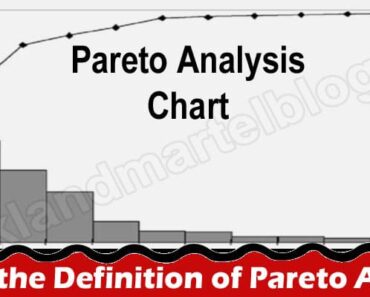Pareto Analysis: The Pareto principle, also known as the 80/20 rule, is a principle that states that, for many events, approximately 80% of the effects come from 20% of the causes. The principle has been applied to various aspects of life, such as business and economics, engineering, software development, and management.
Pareto analysis is a technique that’s based on this principle. Keep reading to learn more about Pareto analysis
What is Pareto analysis?
The Pareto analysis definition is a tool used to help identify and prioritize potential improvements to a process. It is named for Vilfredo Pareto, the creator of the Pareto principle. The principle can be applied to any situation where a limited number of things are causing a majority of the problems.
In order to use Pareto analysis, you first need to identify the specific problems that need to be addressed. Next, you need to determine the root causes of those problems. Finally, you need to prioritize the solutions based on the impact they will have on solving the most important problems.
Pareto analysis can be used to improve any process, from manufacturing to customer service. It’s particularly useful for identifying where to focus limited resources in order to get the biggest return on investment.
Pareto analysis is an excellent tool for problem-solving.
Problem-solving is a critical part of any organization, and it’s especially important to focus on the most substantial problems or opportunities. As a result, this analysis tool can help you improve organizational performance.
Pareto analysis is a tool that helps you focus on the most significant problems or opportunities. When applied to problem-solving, the Pareto principle can help you focus on the most important problems. This can lead to big improvements since you’re not wasting time on less important issues.
It does this by identifying the most impactful 20 percent of problems or opportunities and then focusing on those. This can lead to big improvements since you’re not wasting time on less important issues.
Pareto analysis is easy to use and understand.
Another benefit of using Pareto analysis is that it’s easy to use and understand. Everyone involved in making decisions about which problems to address can easily see which ones are ranked highest. This makes it a great tool for quickly prioritizing problems and taking action on the most important ones. When used effectively, Pareto analysis can help you achieve your goals more efficiently and effectively.
Pareto analysis is a versatile tool.
Pareto analysis can be used for any type of business problem or opportunity, regardless of size or complexity. By breaking down a problem or opportunity into its component parts, Pareto analysis can help you focus on the most important factors.
For example, if you are trying to increase sales, you might break down your sales process into steps, and then analyze which steps have the biggest impact on sales. This could help you focus on improving those steps, and see the biggest impact on your bottom line. Alternatively, if you are trying to reduce costs, you might break down your expenses into categories, and then focus on the categories with the biggest impact.
The Pareto principle can be used for any type of business problem or opportunity, so it is a tool that should be in every business owner’s toolbox. By focusing on the most important factors, you can make faster and more impactful decisions, and see better results for your business.
Pareto analysis is an essential technique for any business.
Overall, Pareto analysis is a valuable tool for identifying and prioritizing opportunities for improvement. It can help identify where changes will have the biggest impact on overall business performance.


